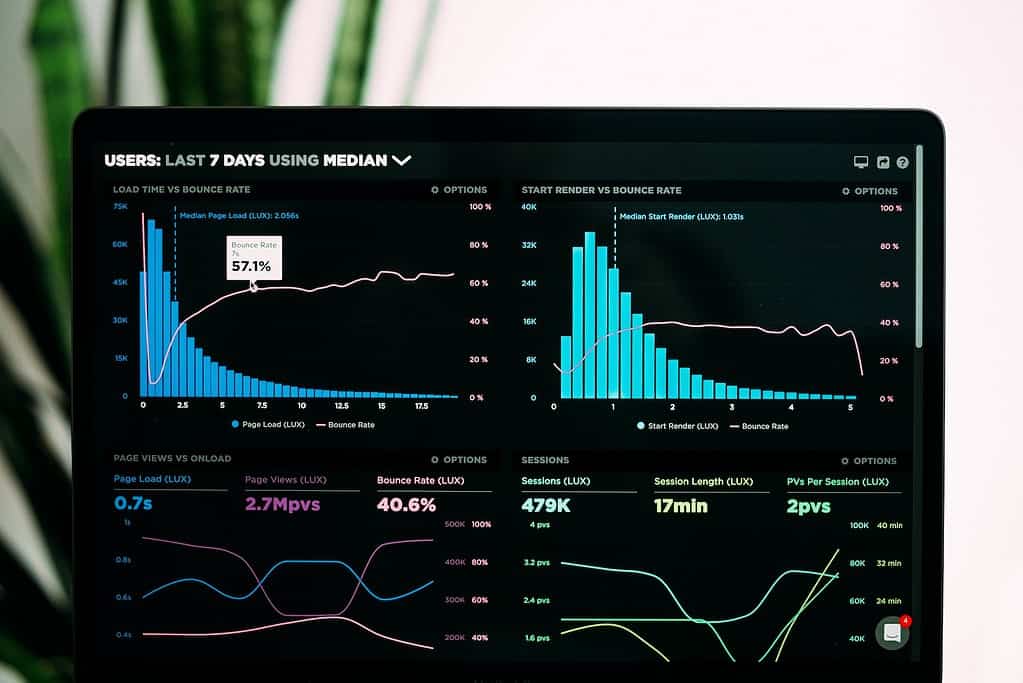10 Steps To Build A Winning Content Plan in 2023
Are you looking to create a winning content plan that will help your business reach its goals? Content marketing is a great way to engage customers and promote your brand. But building an effective content plan can be daunting. Don’t worry, we’re here to help! In this article, we’ll outline 10 simple steps you can take to build a winning content plan for your business.
You might be wondering how long it takes to build a winning content plan. The truth is, it depends on the size of your company and the complexity of your project. However, following these 10 steps will set you up for success and get your content plan off the ground in no time. We’ve broken each step down into easy-to-understand sections so you can quickly understand what needs to be done and why.
In today’s competitive market, having an effective, winning content plan is essential for any business looking to succeed. So let’s get started on creating yours! Read on to learn our 10 steps to build a winning content plan and make sure you don’t miss out on any opportunities.

1. Setting Goals
Setting goals is an important first step in creating a winning content plan. Knowing what you hope to achieve with your content will help guide the decisions you make and create a sense of purpose for your work. Here are some tips on setting meaningful goals:
Start by considering who your content is for. Think about the audience you’re trying to reach, and why they should care about what you’re saying. This will help inform what kind of content you create and how it should be presented.
It’s also important to define how success looks for your content plan. Are you looking to increase brand awareness? Build relationships with customers? Generate more leads? Having concrete objectives in mind can help you measure the effectiveness of your plan as it progresses.
Think about how much time and effort is required for each element of your winning content plan, as well as any external resources that may be needed such as contractors or software tools. Setting realistic expectations from the outset will help ensure that all targets are achievable and that your plan can move ahead without any obstacles. Considering these things now can save a lot of headaches down the line!
2. Researching Your Target Audience
Now that you have a clear idea of your goals, it’s time to focus on your target audience. Knowing who you are creating content for is essential in order to make sure that it resonates with them and meets their needs. Here are some tips on researching your target audience:
The first step is to brainstorm the different types of people who may be interested in what you have to offer. Are there certain demographics or customer personas that could benefit from your content? Consider their age, gender, interests, lifestyle and location. All of this data can be used to tailor your winning content plan accordingly.
Next, dive into other research methods such as surveys and social media analytics. Surveys can provide valuable insights into the thoughts and opinions of potential customers, while analytics give you a better understanding of how people interact with your business online. This data can then be used to better inform the topics and types of content you create for maximum engagement and return on investment.
It’s also important to take note of any trends or changes within your industry that could affect the success of your plan. Keeping up with current events can help ensure that your content stays relevant and timely for maximum impact. Doing this kind of research early will save time down the line and help guarantee the success of your plan!
3. Brainstorming Ideas
Having a deep understanding of your target audience is key to creating an effective content plan. Now, it’s time to take that knowledge and start brainstorming ideas for content. Here are some tips on coming up with great ideas:
The first step is to think about the topics that your audience may be interested in. Is there anything trending right now or any recent news stories related to your industry? Think of any questions they may have and use those as a starting point for topics.
It can also be helpful to look at other successful winning content plans within your industry. While you don’t want to copy someone else’s work, it can give you inspiration on how to approach the topics you’ve identified and what kind of content would work best for them.
Finally, consider different formats for presenting the content such as blog posts, videos, podcasts or infographics. This will help keep each piece interesting and engaging for viewers and make sure that it meets their needs. With these tips in mind, you’ll be able to come up with creative ideas for a winning content plan!
4. Developing A Content Strategy
Once you have a list of ideas, it’s time to develop a content strategy. This is the process of taking those ideas and turning them into actionable steps to create content that resonates with your audience. Here are some tips on how to do this:
First, identify your goals for each piece of content. Are you creating content for brand awareness or to drive more sales? What action do you want readers to take at the end of each piece? Knowing these goals will help you shape the content’s message and determine which format will best reach your target audience.
Second, decide on a timeline for publishing your content. This will help keep you on track with both producing the content and ensuring that it reaches its intended audience in a timely manner. It can also help you measure the effectiveness of each piece of content and adjust future plans accordingly.
Finally, establish a workflow that works best for you and your team. Who will be responsible for researching topics, writing copy, editing drafts, etc.? Having these roles clearly defined makes it easier to get started quickly and move forward efficiently with creating great content!

5. Outlining Your Winning Content Plan
Armed with a content strategy, it’s time to outline your content plan. This means taking the goals and timeline from your strategy and getting specific about what content will be created and when. Here are some tips for creating an effective content plan:
First, create a list of topics for each piece of content. Brainstorm different ideas that align with your goals, such as customer stories or industry trends. Once you have a list, prioritize them based on the timeline and audience needs.
Second, break down each topic into individual steps required to produce the content. This includes researching relevant sources, writing a draft, having it proofread or edited, and any other tasks necessary before publishing. Estimate how long each step should take so you can schedule accordingly.
Finally, identify who is responsible for the different tasks needed to create each piece of content. Assigning roles ensure that everyone knows their responsibilities and that no one is left waiting on someone else to finish their work before they can move forward with their own tasks. Knowing who will be doing which tasks also helps prevent miscommunication and duplication of effort as you progress through your content plan.
6. Writing The Copy
Now that you have a winning content plan in place, it’s time to move on to the actual writing. Creating engaging copy that resonates with your target audience requires careful planning and attention to detail. Here are some tips for writing effective copy:
First, consider the tone of your message. Depending on the topic, you may want to use a more formal or conversational style. Keep in mind that most readers prefer content that is easy to read and understand. Choose a language that reflects your brand personality and aligns with your audience’s expectations.
Second, focus on clarity and brevity. Use simple but descriptive language and avoid jargon or overly technical terms when possible. Make sure each sentence has a purpose and get rid of any unnecessary words or phrases that add little value. Finally, double-check for grammar and spelling mistakes before submitting your work for review.
With these tips in mind, you can create compelling copy that conveys your message while also keeping readers engaged throughout the entire piece of content.
7. Creating Visuals
In order to create a successful content plan, visuals are essential. Visuals can help to draw in readers and break up text-heavy pieces of content. There are several types of visuals you can use, including images, infographics, diagrams, and videos. Each type of visual has its own benefits when used correctly.
When selecting visuals for your content plan, consider the purpose and message you’re trying to convey. Images should reflect the topic or story you’re telling and should be relevant to the content. Infographics can be used to illustrate complex data or concepts in an easy-to-understand format. Diagrams can also be helpful for breaking down processes into easy-to-follow steps. And finally, videos can be great for providing an engaging viewing experience and increasing engagement with your content.
Once you have chosen the right visuals for your content plan, make sure they are properly optimized for web viewing by reducing file size and using appropriate image formats (JPEG or PNG). This will help ensure that your website loads quickly and readers don’t get distracted while scrolling through your page. It’s also important to make sure any images or graphics are properly attributed so that you do not violate copyright laws or infringe on someone else’s work. With these considerations in mind, you can create visually appealing content that resonates with readers and keeps them engaged throughout the entire piece of content.
8. Scheduling And Publishing
Now that you have created the visuals for your content plan, it’s time to schedule and publish the pieces. Scheduling your content can be a daunting task, but there are several tools available to help make the process easier. These tools can provide an overview of published content and allow you to set up automated posts with ease. Additionally, they can track post performance so that you can better understand what types of content are resonating with readers.
When scheduling posts, it’s important to consider when your audience is most likely to be online. This will help ensure that your content reaches the right people at the right time and has a greater chance of success. Additionally, think about how often you should post in order to keep readers engaged without overwhelming them with too much content. With this information in hand, you can create an effective publishing schedule that works for both your audience and your business goals.
Lastly, once you’ve established a posting schedule, don’t forget to promote it on social media platforms like Twitter or Facebook! This is a great way to get the word out about your content plan and increase its reach. You can also use these platforms as an opportunity to engage with readers by responding to comments or questions related to your posts. Utilizing social media effectively will help build relationships with readers and give them a reason to come back for more!
9. Promoting Your Content
Now that your content plan is in place, it’s time to promote it and make sure it reaches the right people. One way to do this is by leveraging influencers in your industry. Influencers can help spread the word about your content and increase its reach. When selecting influencers, look for those who have an engaged following that aligns with your target audience. You can also use social media advertising to promote specific pieces of content or draw attention to your blog.
Another great way to promote your content plan is through email marketing. This allows you to send targeted messages directly to the inboxes of potential readers and customers. Make sure that you include a clear call-to-action in each email so that readers will know what action they should take next. Additionally, consider adding incentives such as discounts or freebies for those who click through on the email link and visit your website. This can be a great way to drive traffic and increase engagement with readers.
Finally, don’t forget about traditional methods of promotion such as word-of-mouth or print advertising. While these may not be as popular as digital methods, they still have their place in promoting content plans. Plus, they provide an opportunity for engaging with local audiences and building relationships with customers in a more tangible way than online platforms allow. So don’t discount the importance of these methods when creating a successful content plan!

10. Analyzing Results
Once your content plan has been in motion for a while, it’s important to analyze the results. This will give you insights into what content worked well and what can be improved upon.
Analyzing the results of your content plan is necessary to ensure that you are achieving your desired outcomes. Look for patterns in the data such as which pieces of content got the most shares, likes, or comments. You can also measure the success of a piece of content by tracking the number of clicks or website visits it generated. This will help you determine what type of content resonates with your audience and which topics should be covered more often.
Data analysis can also provide valuable insights into which channels are working best for promoting your content. By tracking how many people visit a link from each platform, you can get an idea of where to focus your efforts when creating future campaigns. Additionally, understanding how readers interact with specific pieces of content on each platform can help inform decisions about where to advertise in the future.
Making use of this data will allow you to refine your content plan over time and make sure that it continues to meet its goals. Taking the time to analyze results will help ensure that all future efforts are focused on reaching potential customers and keeping them engaged with your brand!
Frequently Asked Questions
How Do I Make Sure My Content Resonates With My Target Audience?
Creating content that resonates with your target audience is essential for any successful marketing strategy. To ensure your content is effective, you need to understand and consider the wants and needs of your audience. By creating content tailored to their interests, you can build a strong connection that will increase engagement and trust.
But how do you go about finding out what type of content your audience wants? One way to start is by researching current trends relevant to your industry. You should also take the time to survey existing customers and learn what they like or dislike about their experience with your brand. Finally, monitoring social media can be helpful in understanding the conversations taking place around topics related to your business.
By leveraging these methods, you can gain a better understanding of who your target audience is and the kind of content they’re looking for. This insight will allow you to create more meaningful content that’s sure to resonate with them on an emotional level. Put in the effort today and you’ll be rewarded with increased engagement down the road!
What Types Of Content Should I Include In My Content Plan?
What types of content should I include in my content plan? This is an important question to consider when creating a successful content plan. It’s essential to create a variety of different types of content that will engage your target audience and keep them coming back for more.
When it comes to creating content, there are a few key elements to consider. Firstly, you’ll want to make sure that your content provides value to your audience. This could mean providing information, entertainment, or even something helpful such as a tutorial. Additionally, it should be engaging and relevant so that your audience will be interested in reading it.
Finally, you’ll also want to think about the best way to present the content. Different formats such as blog posts, videos, infographics, and podcasts can all provide value in their own unique ways. Consider what type of format might work best for each piece of content you create and make sure that the chosen format is consistent throughout the entire plan.
Choosing the right types of content is an important part of developing a successful content plan that resonates with your target audience. Take some time to think about what kind of content you want to include and how you can make it as engaging and valuable as possible.
How Do I Ensure That My Content Is Reaching The Right People?
Ensuring that your content is reaching the right people is an important part of creating a successful content plan. It’s not enough to just create content; you need to make sure it’s reaching the right audience. To do this, you need to understand who your target audience is and what channels they use to consume content.
Using analytics tools can help you identify which channels are most effective for reaching your target audience. Once you know which channels are working best, you can focus your efforts on those. You may also want to consider using paid ads or influencer marketing in order to reach even more of your desired audience.
It’s also a good idea to evaluate how well your content is performing with each channel and adjust accordingly. Look at metrics such as views, likes, and shares in order to determine which types of content resonate best with your target demographic. Analyzing this data can help you refine your content strategy and ensure that it’s delivering the results you’re looking for.
By understanding who you’re trying to reach, utilizing analytics tools, and keeping track of performance metrics, you can give yourself a better chance of ensuring that your content reaches the right people. Doing so will help ensure that the time and effort invested in creating a winning content plan pays off in the end.
What Is The Best Way To Measure The Success Of A Content Plan?
Measuring the success of a content plan is an essential step for any business owner looking to maximize their return on investment in terms of content creation. It’s important to identify which metrics are best suited to evaluate the performance of content, and how to use those metrics to effectively track progress.
There are a variety of methods for assessing the success of a content plan. Most commonly, businesses will measure key performance indicators (KPIs) such as web traffic, lead generation and sales conversion rates. Additionally, other useful metrics may include social media engagement and shares, email open rates, backlinks and time spent on page.
By tracking each metric closely over time, businesses can gain invaluable insight into the effectiveness of their content plans. This allows them to make adjustments based on what works and what doesn’t in order to optimize their results going forward. It also helps them better understand their target audience, enabling them to create more targeted content that resonates with customers.
Ultimately, it’s important for businesses to have an understanding of how successful their content plans are in order to ensure they’re getting a good return on their investment. By using relevant KPIs and closely monitoring progress, businesses can get a clear picture of the performance of their content plan and make necessary changes if needed.
How Can I Make Sure My Content Is Optimized For Search Engines?
Search engine optimization (SEO) is a key factor in making sure your content plan is successful. After all, if people can’t find your content, then it won’t be read. Optimizing your content for search engines involves researching keywords and incorporating them into the text of your content. It also requires crafting meta descriptions, titles and headings that are keyword-rich and relevant to the topic.
To make sure your content is optimized for search engines, you should start by researching keywords related to the topic you’re writing about. You can use keyword research tools such as Google Adwords Keyword Planner or SEMrush to find high-traffic terms related to your topic. Once you have identified these terms, you can incorporate them into the body of your article in a natural way – don’t stuff too many of them into one section! Additionally, make sure to include them in the title and meta description so that they appear when a user searches for those terms on Google or another search engine.
In addition to including keywords throughout your article, you should also create headings that contain keywords. This will help users skim through longer articles and quickly identify what each section is about. Furthermore, it will help search engine crawlers easily browse through the content on your page so that they can properly index it in their database and show it in the results pages when someone searches for related words.
By following these steps, you can ensure that potential readers can easily find your content when they search on a search engine – which is essential if you want people to engage with it! Taking time to optimize each piece of content for SEO will go a long way towards helping you achieve success with your content plan.
Helpful Video From Hubspot
Conclusion
To ensure your content plan is successful, it’s important to create content that resonates with your target audience. You should also make sure you’re optimizing for search engines and making sure that your content reaches the right people. Finally, measure the success of your content plan by tracking how many views, likes, shares, and conversions it gets.
By following these steps and dedicating time to planning out a winning content strategy, you can ensure that your efforts are going to be effective. It’s all about creating quality content that will engage readers and drive them toward taking further action. With a well-thought-out plan in place, you’ll be able to create valuable content that will help you reach your goals.
So if you’re looking to build a successful content plan, take these tips into consideration. By doing so, you’ll be able to create an effective strategy that will maximize the impact of your efforts and help you reach the desired results. Good luck!







One Comment
Comments are closed.